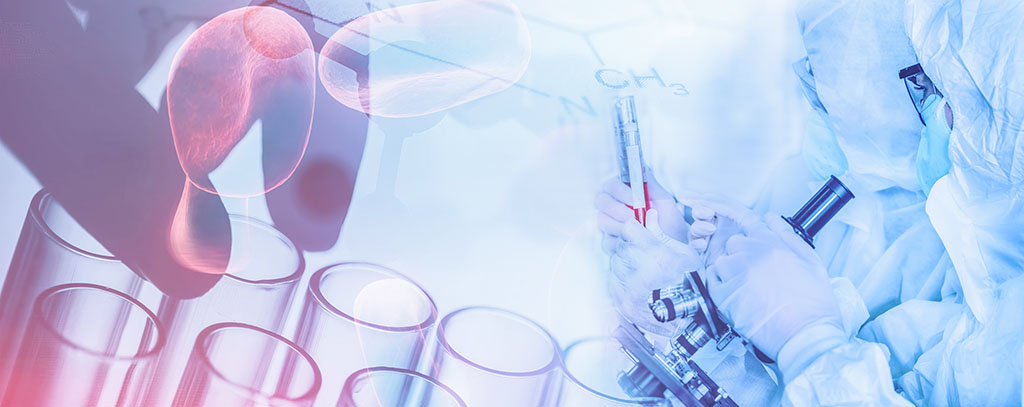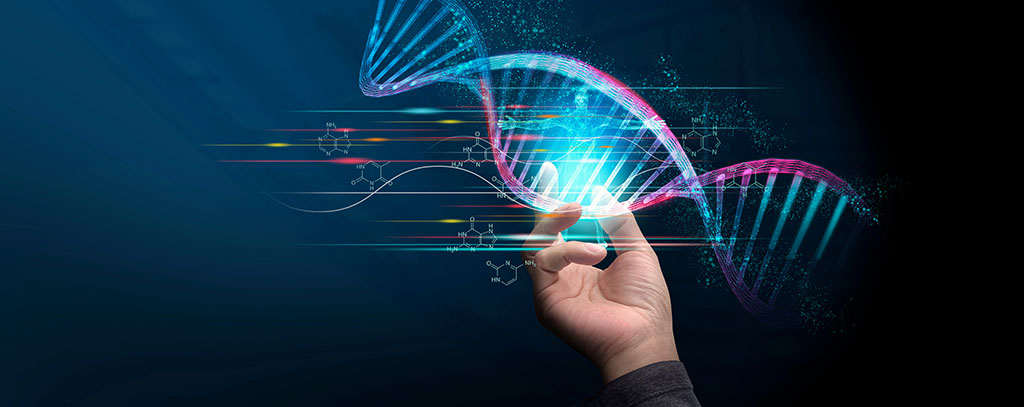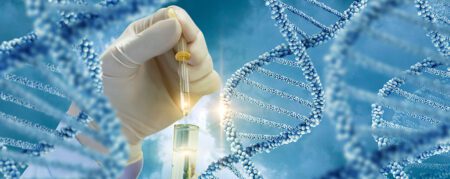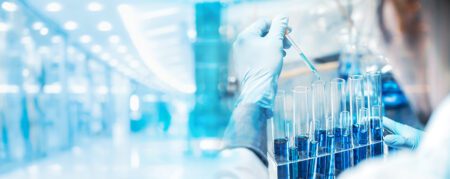


Alcohol Testing Supplies: A Guide for Workplace Safety
May 22, 2023


Understanding DOT and Non-DOT Drug Testing for Companies
May 23, 2023Oral fluid drug testing has become a widely accepted alternative to traditional urine or hair follicle tests for detecting drugs in the body. This non-invasive and efficient approach offers several advantages over traditional urine or hair follicle tests, making it an attractive option for companies looking to implement drug screening policies.
In this blog post, we will provide an overview of oral fluid drug testing, including its benefits and limitations. We will also compare it to other common drug testing methods such as urine, hair follicle, and saliva tests. Moreover, we'll analyze the accuracy, trustworthiness, speediness, user-friendliness and cost efficiency of oral fluid testing in comparison to these other options.
Finally, we will examine some potential disadvantages associated with oral fluid drug testing before concluding with guidance on when to use this method versus others based on factors such as detection window and risk of contamination. By analyzing the benefits and drawbacks of each method, you can choose which test is most appropriate for your organization.
Table of contents
- Overview of Oral Fluid Drug Testing
- What is Oral Fluid Drug Testing?
- Benefits of Oral Fluid Drug Testing
- Limitations of Oral Fluid Drug Testing
- Comparison to Other Drug Testing Methods
- Advantages of Oral Fluid Drug Testing Over Other Methods
- Disadvantages of Oral Fluid Drug Testing Compared to Other Methods
- Choosing the Right Drug Test: Oral Fluid vs Other Methods
- Frequently Asked Questions Oral Fluid Drug Testing
- Conclusion
Overview of Oral Fluid Drug Testing
Oral fluid drug testing is a widely used and efficient technique for identifying the existence of drugs in someone's system. In this section, we will explore what oral fluid drug testing entails, its benefits, and limitations.
What is Oral Fluid Drug Testing?
Oral fluid drug testing involves collecting saliva from an individual's mouth to analyze for the presence of various substances. This non-invasive procedure typically uses a swab or absorbent pad placed between the cheek and lower gum to collect saliva samples. Advanced techniques such as enzyme immunoassay (EIA), liquid chromatography-mass spectrometry (LC-MS), or gas chromatography-mass spectrometry (GC-MS) are used to analyze the collected sample in a laboratory.
Benefits of Oral Fluid Drug Testing
- Ease of collection: Collecting oral fluid samples is quick, easy, and non-invasive compared to other methods like urine or blood tests.
- Tamper-resistant: Since the sample collection process can be directly observed without invading privacy, there are fewer opportunities for adulteration or substitution by test subjects.
- Detection accuracy: Oral fluid tests have been proven to provide accurate results comparable with those obtained through traditional methods such as urine testing (source). They also offer better detection rates for certain drugs like marijuana when compared with hair follicle tests.
- Fast results: Oral fluid drug tests can provide rapid results, with some on-site testing devices delivering outcomes within minutes.
Limitations of Oral Fluid Drug Testing
- Narrow detection window: While oral fluid tests are effective in detecting recent drug use, they may not be suitable for identifying long-term or historical substance abuse due to their shorter detection window compared to hair follicle tests.
- Potential for contamination: Although rare, the presence of food particles or other substances in the mouth could potentially interfere with test results. However, proper collection techniques and guidelines can minimize this risk.
- Limited availability of FDA-cleared devices: Currently, there are fewer FDA-cleared oral fluid testing devices available compared to urine-based options. Nevertheless, ongoing advancements in technology continue to improve the variety and accuracy of these tools (source).
Still, when it comes to determining which drug testing approach is most suitable for an organization, other options should be weighed.
Comparison to Other Drug Testing Methods
In this part, we'll compare oral fluid drug testing with other common methods of screening like urine testing, hair follicle analysis and saliva assessment. Each method has its own set of advantages and disadvantages that make them suitable for different situations.
a. Urine Drug Testing
Urine drug testing is the most widely used method for detecting substance abuse in various settings like workplaces, schools, and law enforcement agencies. This testing procedure entails the procurement of a urine sample from an individual which is then examined to check for traces of particular drugs or their metabolites.
- Advantages: Urine tests have a longer detection window compared to oral fluid tests and are relatively inexpensive.
- Disadvantages: They can be invasive due to the need for private collection facilities and may be subject to tampering or adulteration by individuals attempting to cheat the test.
b. Hair Follicle Drug Testing
Hair follicle drug testing, although less common than urine tests, provides a much longer detection window - up to 90 days after substance use in some cases - making it useful for identifying long-term patterns of abuse rather than recent usage alone. The test requires cutting a small amount of hair from close proximity near scalp level (typically about 100 strands) which is then sent offsite laboratory analysis.
- Advantages: Hair tests have a longer detection window and are difficult to cheat or tamper with.
- Disadvantages: They can be more expensive than other testing methods, may not detect recent drug use, and could potentially lead to false positives due to external contamination of hair samples.
c. Saliva Drug Testing
Saliva drug testing, also known as oral fluid drug testing, involves collecting a sample of an individual's saliva which is then analyzed for the presence of specific drugs or their metabolites. Compared to urine tests, the administration of saliva drug testing is non-invasive and easier due to its minimal privacy concerns.
- Advantages: Saliva tests are less invasive than urine tests, easy to administer without privacy concerns, and provide quick results with minimal risk of adulteration or cheating.
- Disadvantages: The detection window for saliva tests is generally shorter than that of urine or hair follicle tests, making it less suitable for detecting long-term patterns of substance abuse.
In order to choose the most appropriate drug testing method for your organization's needs, it is important to consider factors such as accuracy requirements, budget constraints, detection windows needed based on your goals (e.g., pre-employment screening vs. random workplace testing), potential legal implications surrounding test invasiveness levels, among other aspects unique to each situation at hand.
Overall, oral fluid drug testing offers a reliable and accurate alternative to other more invasive methods of drug testing. Moreover, its cost-effectiveness, speed and convenience make it a desirable choice for those seeking to purchase drug testing materials.
Advantages of Oral Fluid Drug Testing Over Other Methods
In this section, we will discuss the advantages of oral fluid drug testing over other methods such as accuracy and reliability, speed and convenience, and cost-effectiveness.
a. Accuracy and Reliability
Oral fluid drug tests are known for their high level of accuracy and reliability when compared to other methods like urine or hair follicle tests. This is because oral fluids contain a higher concentration of drugs than urine samples do, making it easier to detect the presence of substances in the body (source). Moreover, due to its non-invasive nature, the risk of sample tampering or adulteration is minimized.
b. Speed and Convenience
- Non-invasive collection: Unlike blood or urine tests that require needle sticks or privacy-invading procedures respectively, collecting an oral fluid sample is non-invasive which makes it more comfortable for both employees being tested and those administering the test.
- Rapid results: Oral fluid drug testing can provide results within minutes after taking the sample (source), making them ideal for on-site testing at workplaces where quick decisions need to be made regarding employee safety.
- No special facilities required: Since no specialized equipment is needed to collect an oral fluid sample - only a swab - companies don't have to invest in expensive facilities like restrooms with controlled access that would be necessary for conducting supervised urine collections.
c. Cost-Effectiveness
Oral fluid drug testing is generally more cost-effective than other methods like blood or hair follicle tests, as it requires less specialized equipment and personnel for sample collection and analysis. Additionally, the rapid results provided by oral fluid tests can help companies save money on lost productivity due to waiting for test results (source). In addition, since these tests are non-invasive and don't necessitate extra resources for collection, they can be effortlessly incorporated into already existing workplace safety protocols without incurring substantial additional expenses.
Oral fluid drug testing offers a reliable, cost-effective and convenient solution for companies looking to implement drug testing programs. Despite its benefits, certain drawbacks should be kept in mind when selecting the most suitable drug testing technique.
Disadvantages of Oral Fluid Drug Testing Compared to Other Methods
In this portion, we will consider the cons of oral fluid drug testing when compared to other techniques like urine and hair follicle assessments. While oral fluid drug testing has its advantages, it is essential for buyers to be aware of its limitations before making a decision.
a. Limited Detection Window
One significant disadvantage of oral fluid drug testing is its limited detection window compared to other methods like urine or hair follicle tests. The detection window refers to the period during which drugs can be detected in a person's system after consumption.
- Oral Fluid: Typically detects recent drug use within 24-48 hours.
- Urine: Can detect most drugs for up to several days after use, depending on factors such as dosage and frequency.
- Hair Follicle: Offers an extended detection window that can span months, revealing long-term patterns of substance abuse.
This limitation makes oral fluid tests less suitable for detecting historical or chronic drug usage when compared with alternative test methods like urine or hair follicle analysis.
b. Potential for Contamination
The collection process involved in oral fluid drug testing may pose some risk of contamination if not conducted correctly. For example, certain substances present in the mouth (e.g., food particles) could potentially interfere with test results and lead to false positives/negatives or inconclusive findings (source). To minimize the risk of contamination, it is crucial to follow proper collection procedures and use high-quality testing supplies from reputable providers like Halux Diagnostic.
Despite these disadvantages, oral fluid drug tests remain a popular choice for many companies due to their accuracy, speed, convenience, and cost-effectiveness. However, buyers should carefully consider the specific needs of their organization before deciding on which drug testing method is most suitable.
Oral fluid drug testing has several disadvantages compared to other methods, but it can still be a useful tool in certain circumstances. When choosing the best drug testing method for your company, various factors must be taken into account before a decision is made.
Choosing the Right Drug Test: Oral Fluid vs Other Methods
When deciding which drug testing technique to employ, factors such as precision, velocity, financial practicality, detection window and the chance of contamination should be taken into account. In this section, we will provide guidance on when to use oral fluid drug tests versus other methods by examining these factors.
A. Factors to Consider When Choosing the Right Test Method
- Accuracy and Reliability: It is crucial that your chosen test method provides accurate results consistently. While all testing methods have their strengths and weaknesses in terms of accuracy and reliability, oral fluid drug tests are known for their high level of precision due to reduced risks of tampering or adulteration compared with urine samples.
- Speed and Convenience: The ease of administering a test can play a significant role in choosing the right method for your organization. Oral fluid drug tests offer quick results with minimal inconvenience since they do not require private restrooms or specialized collection facilities like some other methods.
- Detection Window: Depending on your needs, you may want a test that detects recent substance use or one that covers an extended period of time. Urine testing typically has a longer detection window than oral fluid testing but might miss recent usage; whereas hair follicle testing offers an even more extensive detection window but at higher costs.
- Potential for Contamination: The risk of sample contamination should also be considered when selecting a test method. As mentioned earlier in this article, oral fluid samples are less prone to tampering, making them more reliable than urine samples in some cases.
- Cost-Effectiveness: The cost of drug testing supplies and administration can vary greatly depending on the method chosen. Oral fluid tests are generally more affordable than hair follicle tests, but may be slightly more expensive than urine tests due to their specialized collection devices.
B. Pros and Cons Summary
A summary of the advantages and disadvantages of oral fluid drug testing compared to other approaches is provided here, aiding in making an educated decision regarding which type of test best suits your organization.
Frequently Asked Questions Oral Fluid Drug Testing
Can oral fluid be used for drug testing?
Yes, oral fluid can be used for drug testing. Oral fluid tests analyze saliva samples to detect the presence of drugs and their metabolites. This method is non-invasive, quick, and provides reliable results in detecting recent drug use.
How accurate is oral fluid drug testing?
Oral fluid drug testing is highly accurate when conducted properly. The accuracy depends on factors such as test type, quality of the sample collected, and laboratory procedures followed. Most oral fluid tests have a sensitivity rate above 90%, making them a reliable choice for detecting recent substance use.
What are the advantages of oral fluid drug testing?
Advantages of oral-fluid-drug-testing include its non-invasiveness, speediness in obtaining results (within minutes), ease-of-use without requiring specialized facilities or personnel, reduced risk of tampering or adulteration compared to urine-based tests; ability-to-detect-recent-drug-use more effectively than other methods; cost-effectiveness; and higher acceptability among test subjects due to privacy concerns.
What are the disadvantages of oral-fluid-testing?
Disadvantages-of-oral-fluid-testing involve limited detection windows compared to hair follicle or blood tests (typically up-to-48-hours); potential-for-contamination from food particles or smoking residue which may affect results; less established legal precedents surrounding its admissibility in certain jurisdictions; and inability-to-detect-historical-substance-abuse beyond short-term usage patterns.
Conclusion
Compared to other methods such as urine or hair follicle testing, oral fluid tests have a shorter detection window but offer greater accuracy and convenience.
When selecting a drug testing technique, factors such as cost-effectiveness, accuracy and the detection window should be taken into account. Oral fluid testing may be the best option in situations where speed and convenience are a priority.
To learn more about oral fluid drug testing supplies that can help you maintain a safe workplace environment visit Halux Diagnostic.





